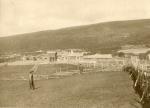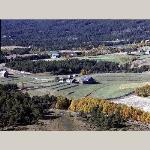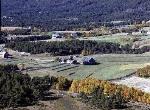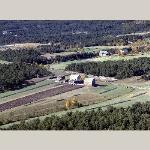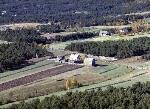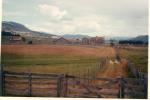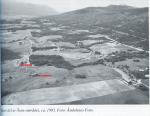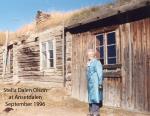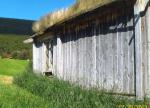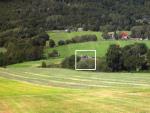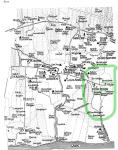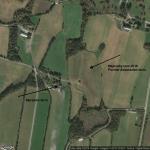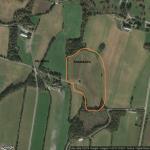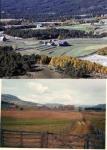Our Dalen and Erlandson Ancestry
Ansetdalen and Myrlykka Farms
History of the Ansetdalen farm - home of the Dalen's, and Myrlykka - home of the Erlandson's.
Comments from Ann-Kristin Holshagen from Lesja, Norway October 2013
"And as for the looks alike or not - things changed dramatically regarding housebuilding here in Norway around 1900. Old ones were torn down and new ones were built. Finally people got to buy the properties (earlier they had only been for rent or what you call it) that they lived in and ran. And new land came to as they put down the Lesja-vatnet (which was actually a big lake all over close to both Myrlykkja and Ånsetdalen ) The fields downwards to the river today, were under water and the bottom of the lake back then. So both scenery and houses have changed since then"
Ansetdalen and Myrlykka Farms



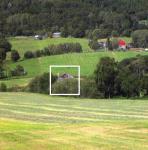
Ansetdalen Farm
Ansetdalen was first settled in the mid 1730's when a newly married couple cleared the place. They received a lease to the farm (a lease was usually for life) in 1752. When the first part of the name - Anset - came from is unknown. It is mentioned first in 1736 when Anne and Knute were married.
Ansetdalen was a tenant farm until 1876.
Sigrid and Johannes (Great grandparents of Stella Dalen Olsen) took over the farm a few years after they married in 1820.
There were also farm animals on the place: a horse, 5-6 cows, 3 calves, 6-7 sheep, and a pig. The last year grain was raised for threshing was in 1955. The farm had no 'seter' (mountain pasture).
First thing known about the place is that the liquor serving family number 1 was taken to court for illegally serving alcohol and the resulting seduction of the served.
In 1792, the tenants received new (or higher?) leases from Knut Syversen Stor-Avdem (1-8) on the use of the land. They had to pay 30 dalers and an annual fee of 3 dalers. Of these, 2 would be paid in cash and 1 in work. Included in the leasehold was Vesl-dalen and Holakeren.
Ansetdalen was not a small farm. The tax records from 1865 and 1875 state that in 1865 they had 2 horses, and there were only 2 or 3 farmers in the entire community that had 2 horses. The farm could support 8 people (the years it didn't freeze). There were many people on the place ,too, two families, two workers, so the men had to find work outside the farm. Hans (Stella's grandfather) is mentioned as a road worker.
Ten years later in 1875 there was a change in the managers, or workers, and the farm was considerable larger, about 2 1/2 acres were added and eleven people would now live there. That was fewer people than ten years earlier. Now they lived reasonably well of the farm alone.
A year later, in 1876, the farm was purchased - not leased anymore. Until the 1900's there were usually farm animals there. Ole (?) - who owned it then, was also a carpenter.
The farmer in Stugu bought Ansetdalen in 1970. No one has lived on the place since. The buildings are falling down and the farm is used for pasture.
Summary translation by Stella Dalen Olsen from page 509 of Bygdebok for Lesja. 2 : Gards- og slektshistorie for nørdre del av Lesja hovudsokn, published 1992. Author: Kjelland, Arnfinn, 1952-
Myrlykkja Farm
Myrlokken is situated down below an old road 350 meters east from Koladalen. The nearest neighbor is Stugu 300 meters toward the northwest. (Look up map page 468)
So we looked up and come to Myrlykkja in 1750 - or the first in 1760 - year. The name is first used in the church record book in 1862, when the eldest daughter of number 1, Anne, deceased.
Myrlykkja had conttage holding below Vesl-Avdem, and was considered country until the first royal road in 1846. But they didn't have tax fees and census records in 1865 and 1875 is first rate holdings with cottagers. In 1878 it is tax divided, and is in the agricultural census.
In the west boundaryof Myrlykkja to Stugu, in the north to Ommundstad, and in the east to Ansetdalen and Vesl-Avdem and south to home fields division a tLeira, the land is flat.
Today the farm operation is grazing sheep. They stoped with grazing cows in 1960. In addition there is 1 horse on the farm, and rabbits. The soil is clay.
Agriculture use and living conditions
We won't forget or slip over lthe opportunities of the olden times. We can look up and see they had economical waterways inabout the 1830, and many later years. Kristoffer, number 4) held the mortgage on the cottage buildings and moveable effects and the payment debt was set at fifty dollars in 1838. The creditors was the head clerk Lokra in Romsdalen.
Tenent holders bought the cottages and possessions and owned their own farm - in 1846. They purchased the place and house, together they inspired happiness and also named Myrlykkja: the site on the south side for the name Plads, for fifty dollars. The debt per perosn in each dwelling was one dollar a year. To buy including the right of way between the woods and pasture, and bought a leasing contract. There wasn't a land assessment. In the contract study of it, they were badly off to buy the pair, and Kristoffer (number 4) nearly had to pay for the place. (From Rod) this is where they took their name from.
Kristoffer had an allowance paid by his son.
It is true the people owned their own farm in 1846, and it's hard to interpret whether the families benefited from owing their own or as the census shows, them moving away.
At first it was popular for the people to move - and the agricultural census in 1865 and 1875. There after they didn't have holding taxes or comprehensive land registration or appraisment commisioning. Look on the table onpage 466. It shows the livestock holding will be able to feed 3-4 men. The production of the 8 laborers was enough to feed the large families of which we learned from the census. With one horse, perhaps they made the thouroughfare?
The next ten years brings and extends to the year 1875, with five men tending the feed, fewer men than the previous years. Now we will arrange the order of the eight laborers: Erland was a merchant. He didn't have a sufficient roadway for trade. It's hard to tell where the store was located. Marit and Erland's son worked as a laborer. Kristian was a tradesman. Johan was a shoemaker and Mathias was a landscape artist.
First in 1878 there was a property assessment. Myrlykkja then had became one-third of Vesl-Avdem, and the eldest son took over the deed of the store of Marit and Erland.
They moved beyond the valley by 1900 - they all were uprooted. Some of them moved to America, and sometime in 1918 Marit died, and the shop was sold at a low price. New people came in 1930, and in the store they sold sloops and fish, navvy, and now animal transport and field industry and farm information.
Translation by Barbara Schlichting, about 1997, of pages 495-496 of of Bygdebok for Lesja. 2 : Gards- og slektshistorie for nørdre del av Lesja hovudsokn, published 1992. Author: Kjelland, Arnfinn, 1952-
